"The Line combines serious commentary with humorous visuals to tell us that in man's lifetime his joys (above the line) just about equal his sorrows (below the line.)" PSA Journal, Sept. 1966, 35.
"Love is found between a man and his mate, between adults and their children, for brothers and sisters, and in countless other familiar ways. But in this film we are introduced to yet another" PSA Journal, Aug. 1967, 37.
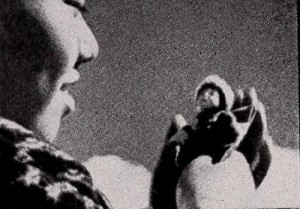
"Possibly the most outstanding features of Okamoto's work were his photography and composition. Many regarded his photography as the finest that had ever been put on motion picture film." American Cinematographer, Dec. 1932, 7.
"Second prize was awarded to Tatsuichi Okamoto of Matsuyama, Japan. Title of his single reeler is 'Lullaby,' which depicts the emotions of a mother singing to her child." Variety, Dec. 13, 1932, 2.
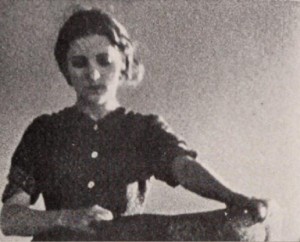
"In New Horizon, Cinematographer Clardy presented the life of a farm girl at a moment of crisis. One reel, almost without titles, tells the story of her efforts to marry the man she loves in spite of her father's opposition which keeps her chained to the farm." American Cinematographer, Feb. 1935, 78.
"Clardy was the winner last year of the gold medal for scenario and photography. Last year Clardy's picture was based on a western theme, while this year his scenario, although set in its greater part in the outdoors had several indoor shots. However, most to be admired was the way in which he handled his production both from composition and directorial standpoint. There were only three people in his cast with the girl assuming the major role. His sense of dramatic values, and especially his fine feeling for the proper tempo brought forth unstinted praise from the judges." American Cinematographer, Dec. 1934, 365
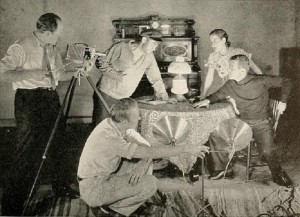
"Not One Word, by Kenneth F. Space, ACL, is an all around triumph of amateur photoplay production. It is a simple melodrama of the keeper of a lighthouse, his wife and the rejected suitor who returns. A wreck at sea (beautifully staged in miniature) is the complicating dramatic factor, and, with these ingredients, a dignified motion picture story of remarkable unity has been produced. In it, Mr. Space and his able staff have blended dramatic lighting, authentic settings and superb photography to achieve a distinguished whole. Under restrained but smoothly paced direction, the three leading players have enacted their roles with definite histrionic skill. If one were to try to select a single quality in the film which is outstandingly brilliant, the vote of this observer would be cast for the cutting. It is accurate and incisive, adding that last bit of dramatic "punch" which is perhaps the quality least often achieved by the amateur producer. Not One Word speaks for itself, but in the wordless and potent idiom of cinematic imagination." Movie Makers, Dec. 1934, 534.

Después de una noche de tragos en un bar, Olga sale con un extraño y lo lleva a su hogar. Mientras tienen relaciones sexuales, ella ve la foto de un niño pequeño en la pared, y recuerda tocar el piano y divertirse con el. Después el filme muestra a Olga en el baño inyectándose drogas para después vagar por las calles bajo la influencia de narcóticos y alimentar a un perro con pan mientras continúa recordando estar con el pequeño niño. Olga regresa al mismo bar acompañada de una mujer y se emborracha; después de salir juntas hacia el hogar de Olga, empiezan a desvestirse y besarse. Olga ve la foto otra vez y empieza a llorar, esta escena es seguida por imágenes de ella recibiendo oxígeno en una ambulancia y después llorando a lado de la otra mujer, mirando la fotografía.
After a night of drinks in a bar, Olga leaves with a stranger and takes him home. While having sex with him, she sees the picture of a little boy on the wall, and remembers playing piano and having fun with him. Afterwards the film shows Olga in the bathroom injecting herself with drugs, wandering the streets while in the influence of the drugs and feeding a dog with bread while she keeps on remembering being with the kid. Olga then goes to the same bar with a woman and gets drunk, they leave together to Olga’s home and while they begin to undress and kiss, she sees the picture again and starts crying, this scene is followed by images of her receiving oxygen in an ambulance, and then crying again next to the other woman, looking at the picture.
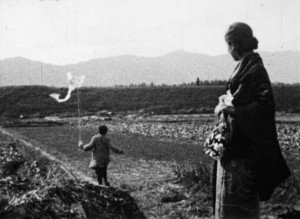
‘Ayako prays at the grave of her brother. Returning home, she helps Seizo - her late brother's young friend - to release his kite caught in the trees; an interlude that restores memories of the departed. Rural life and customs and the special delights of childhood are skilfully conveyed’ (EAFA Database).
Referred to "Sister and Brother" in 1932 American Cinematographer competition.
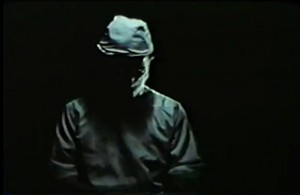
"Filmed by Arthur H. Smith of San Francisco, the story opens with Jackie, a lad of 4 years, playing on the sidewalk near his home. Observing a kitten crossing the street, his natural inclination toward pets impels him to run into the street after it. An unseen car bears down upon the boy and the driver is unable to avoid striking him down. Jackie is rushed to the hospital where his life is saved with difficulty, although he will be permanently crippled. The doctor advises Jackie's parents that although he has survived the operation, the lad has only a short time to live." Home Movies, Dec. 1946, 749.
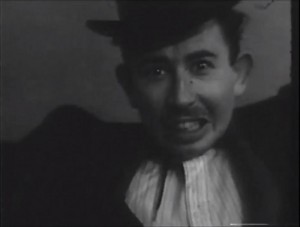
"The Suetonius Version is Stan Fox’s last 16mm amateur film. The story is about a university professor who is fascinated with one of his young female students." (Royal BC Museum)
This film was shot on the UBC campus, including in the closed stacks at the UBC Library.
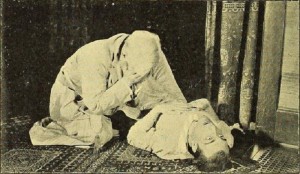
"The production of the Flower City Amateur Movie Club of Rochester, N. Y., Terror, 400 ft., 16mm., was written and directed by Frank J. Buehlman. It was recently screened as a special, added feature on a week's run at the Little Theater in Rochester. Terror is a psychological study of the effect of fear. Its story is based on a practical joke engineered by friends of the victim who, to the end of the film, remain ignorant of the disastrous results. As the story develops, we see the commonplace incidents of every day life through the eyes of the fear obsessed principal character. The handling of the theme required great care but the producers succeeded in making the highly fantastic reactions of the character seem plausible. With its exquisite lighting effects and the dramatic power achieved in the climactic sequences through cinematography, this film is certainly outstanding." Movie Makers, Dec. 1930, 759.
Total Pages: 3